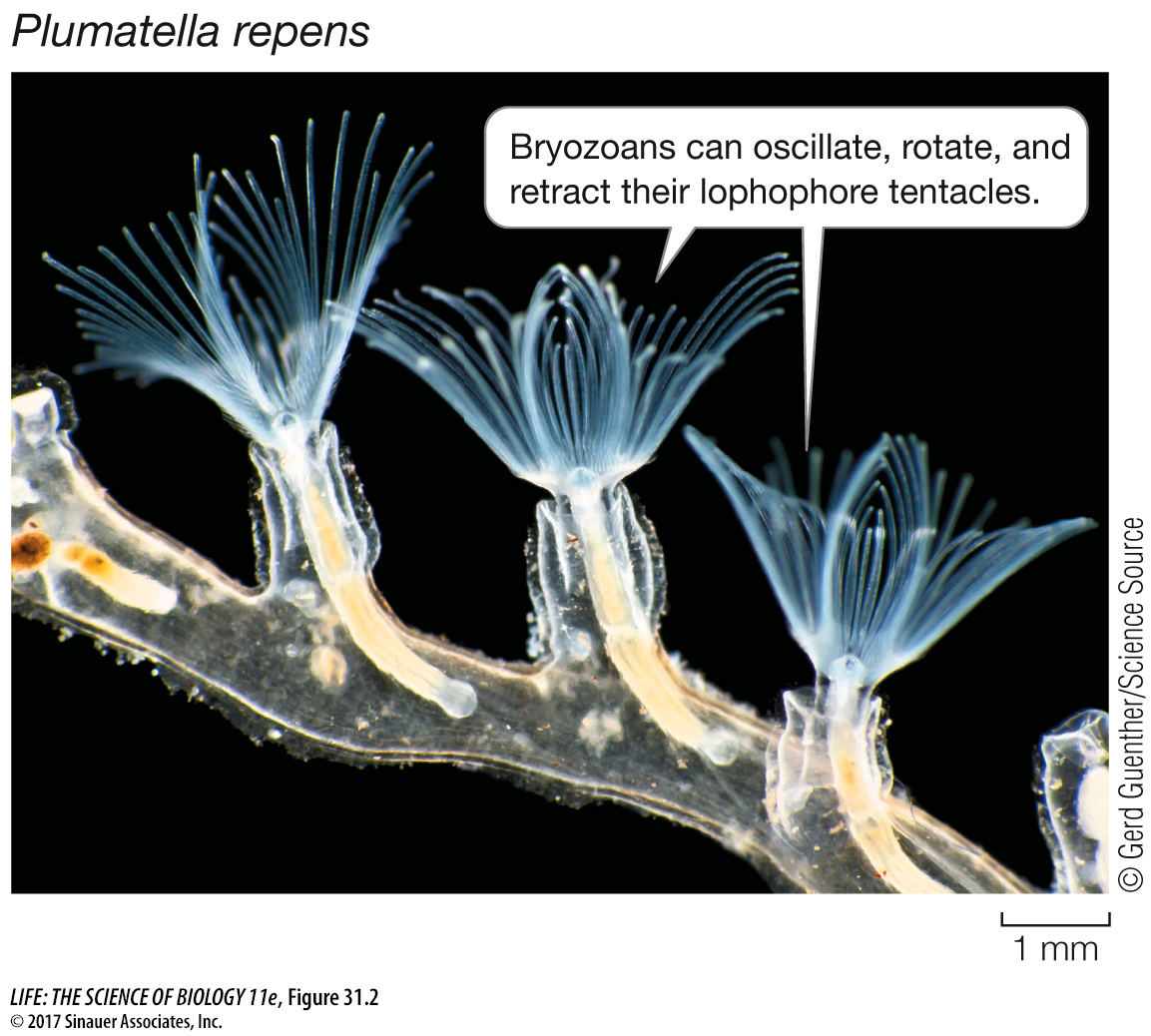Cilia-
Lophotrochozoans derive their name from two different ciliated features: a feeding structure known as a lophophore and a free-
Several distantly related groups of lophotrochozoans (including bryozoans, entoprocts, brachiopods, and phoronids) have a lophophore, a circular or U-

Media Clip 31.1 Feeding with a Lophophore
www.life11e.com/
660
Some lophotrochozoans, especially in their larval form, use cilia for locomotion. The larval form known as a trochophore moves by beating a band of cilia (see Figure 30.11A). This movement of cilia also brings plankton closer to the larva, where it can capture and ingest them (its cilia are therefore similar in function to the cilia of the lophophore). Trochophore larvae are found among many of the major groups of lophotrochozoans, including the mollusks, annelids, ribbon worms, entoprocts, and bryozoans. This larval form was probably present in the common ancestor of lophotrochozoans but has been subsequently lost in several lineages.
Some lophotrochozoans (including flatworms, ribbon worms, annelids, and mollusks) exhibit spiral *cleavage in early development, in which layers of new cells spiral obliquely around the axis of the animal–
*connect the concepts As described in Key Concept 44.2, cleavage is the sequence of early cell divisions that transforms the diploid zygote into a mass of undifferentiated cells that will develop into the embryo. Different patterns of cleavage result in differential distributions of nutrients and cytoplasmic determinants within the egg cytoplasm.
Many lineages of lophotrochozoans have a wormlike body form, which means that they are bilaterally symmetrical, legless, soft-